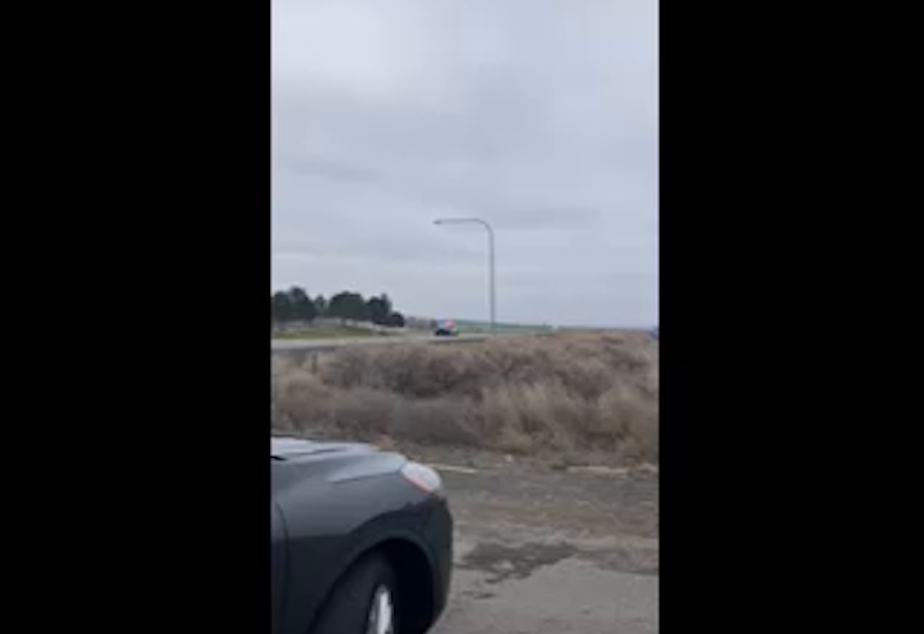VIDEO: Runaway tanker rolls free for 15 miles near Walla Walla, hitting 50 mph
Federal officials have launched an investigation into a runaway train car that rolled out of control for 15 miles near Walla Walla, Washington, on Tuesday.
Police raced westward on U.S. Highway 12 where it parallels the train tracks and blocked off at least one road crossing the wayward black tanker’s path.
Walla Walla County Undersheriff Joe Klundt said the tanker car hit an estimated top speed of 50 miles per hour before slowing down enough for an employee of Columbia Rail to hop aboard and apply the brakes in the town of Touchet.

 14 secs
A runaway rail car speeds west near Walla Walla, Washington, on Tuesday.
14 secs
A runaway rail car speeds west near Walla Walla, Washington, on Tuesday.
A crew was changing out an empty propane tanker car for a full one at the Walla Walla location of propane distributor Ferrellgas when the empty one started rolling away, according to Derek Reid, the Walla Walla-based rail company’s assistant general manager.
“The empty car was parked. It got loose," Reid said. "It’s currently under investigation.”
Sponsored
No one was hurt, and no property was damaged, according to the Walla Walla County Sheriff’s Office.
The Federal Railroad Administration investigates any accident involving a runaway train or rail car.
“The carrier should have specific rules regarding securement of rail cars when they are being set out, even temporarily, ESPECIALLY on tracks with a grade!” Herb Krohn with the International Association of Sheet Metal, Air, Rail and Transportation Workers said in an email.
All modern railcars have brakes that can be controlled remotely from the locomotive or manually by cranking a big wheel at the end of the car.
Railcars’ air brakes are designed to be failsafe: If they lose air pressure for any reason, the brakes engage.
Emptied tankers often still have some product left behind and are called “residue cars.”
Sponsored
Under U.S. Environmental Protection Agency regulations, a tanker car of a hazardous material can be considered empty if its residue is less than 0.3% of its capacity and, for pressurized contents like propane, if the pressure inside the tanker approaches the atmospheric pressure outside.
A typical 30,000-gallon tanker car could still have about 90 gallons of fuel in it and be considered empty under federal law.
A runaway train carrying 2 million gallons of crude oil smashed into the town of Lac-Mégantic, Quebec, in 2013, killing 47 people and prompting reforms in Canada and the United States.
Environmental groups say much more remains to be done to make the transportation of volatile fossil fuels safe.
The sides of newly built tanker cars are designed to resist punctures from collisions at up to 12 miles an hour. The reinforced ends of the cylindrical tanks are supposed to resist punctures at up to 18 miles an hour.
It is unclear what year or model of tanker car rolled away from Walla Walla at about three times those speeds on Tuesday.
This story has been updated.




